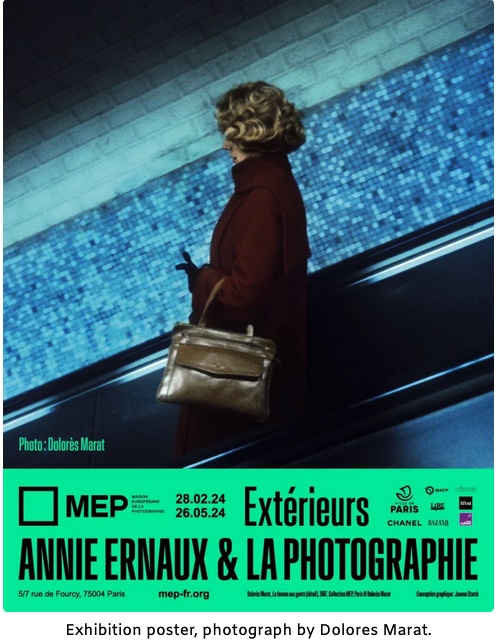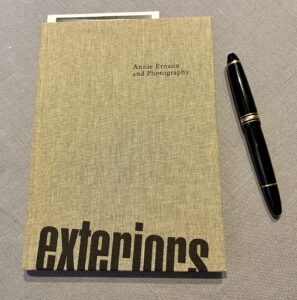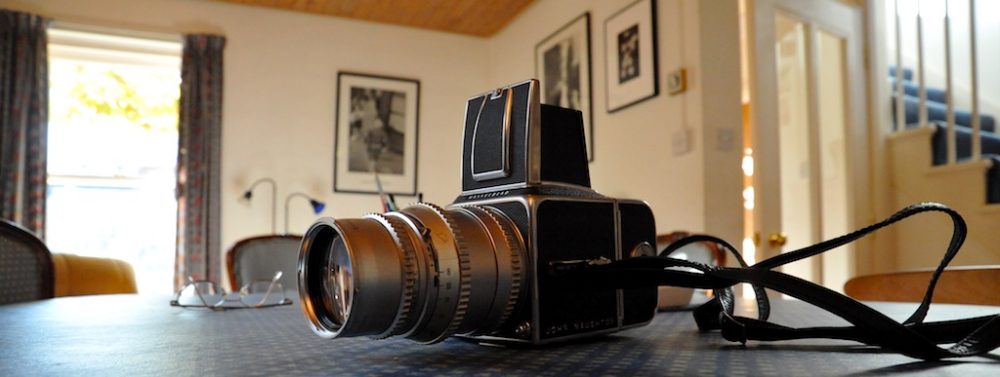Director’s cut

Strange juxtaposition of Andrew ‘Brillopad’ Neil and someone else. Shot in 2007.
Quote of the Day
“Ideas rot if you don’t do something with them. Don’t hoard them. Blog them or otherwise tell people.”
- Ed Dumbill
Musical alternative to the morning’s radio news
Claude Debussy | Petite Suite for Piano Duet: En bateau | Dorota and Paweł Motyczyńska
Long video of the Day
This documentary, The Last Repair Shop, won an Oscar this year. It’s about the dedicated people who repair broken musical instruments for Los Angeles kids, and it’s the loveliest thing I’ve seen in a while. And the great thing is that it’s on YouTube, with occasional brief interruptions for ads. It’s 40 minutes long, but once you’ve embarked on it you’ll stay the course. So take a break, pour some coffee and enjoy a reminder of the better angels of our nature.
Ireland opens its arms to tech titans, but…
…Tax revenues from Silicon Valley giants have made the republic wealthy on paper, but housing and healthcare crises persist.
Yesterday’s Observer column.
In 1956, a chap named TK “Ken” Whitaker, an Irish civil servant who had trained as an economist, was appointed permanent secretary of the finance department in Dublin at the relatively young age of 39. From his vantage point at the top of his country’s treasury, the view was bleak. The Irish republic was, economically and socially, in deep trouble. It had no natural resources, very little industry and was mired in a deep depression. Inflation and unemployment were high. Ireland’s main export was its young people, who were fleeing in thousands every year, seeking work and better lives elsewhere. The proud dream of Irish independence had produced a poor, priest-ridden statelet on the brink of failure.
Whitaker immediately put together a team of younger officials who did a critical analysis of the country’s economic failings and came up with a set of policies for rescuing it. The resulting report, entitled First Programme for Economic Expansion, was published in November 1958, and after Seán Lemass was elected taoiseach (prime minister) in 1959, it became Ireland’s strategy for survival…
Do read on
Books, etc.

An old friend of mine was in Paris last week (lucky devil) and he messaged me (is that really a verb?) about a terrific photographic exhibition he’d just been to at the Maison Européenne de la Photographie (MEP). The show was curated by Lou Stoppard and celebrates the relationship between Annie Ernaux’s writing (especially her Exteriors book) and photography. Since I love her work and see no prospect of getting to Paris in the near future, I spent some time growling quietly about the Unfairness of Life, etc.
And then, two days ago, I came home after giving a talk in College and what should I find on the doorstep but this delicious little book.

It’s basically a companion-piece to the exhibition, in which snippets from Ernaux’s book Exteriors are accompanied by photographs drawn from the MEP’s collections each of which in some way resonates with the accompanying snippets.
As it happens, I had read Exteriors earlier and loved it. It’s basically a compendium of unconnected snippets — observations of things, people, situations that Arnaux has seen while going about her daily life.
Here’s an example:
The lights and clammy atmosphere of the Charles-de-Gaulle Étoile station. Women were buying jewellery at the foot of the twin escalators. In one corridor, on the ground, in an area marked out by chalk, someone had scribbled: ’To buy food. I have no family.’ But the man or woman who had written that had gone, the chalk circle was empty.. People avoided walking across it.
Time and again, the thought that came to me as I read was that “these are really photographs written in text”. And of course that’s what Ernaux had in mind. “I have sought”, she writes, “to describe reality as though the eyes of a photographer and preserve the mystery and opacity of the lives I encountered.”
So it was clever and original of Lou Stoppard to have come up with the idea for the show. Her intention, she writes in an postscript, was
to compare Ernaux’s Ernaux’s texts with photographs, placing them next to images as if working on a speculative group show. I was intrigued by what this process would reveal about how we approach literature, as opposed to photography. What would it expose about the expectation and ideals we project onto each media? Can you see a text? Can you read a photograph? Do we presume a text has more narrative, or more bias, than a photograph? Do we presume that texts can never capture the same sense of reality as photographs, cannot be ‘proof’ or ‘evidence’ (to use words that Ernaux favours). What does it mean to see ‘as if through the eyes of a photographer’? And, could you say that in Exteriors Ernaux was actually making images, rather than writing texts?
Fabulously interesting throughout. And I came away with the idea that as a photographer one should sometimes try to capture the banal rather than seeking out the exceptional.
If you haven’t read Ernaux, the New Yorker had a nice essay about her by Alexandra Schwartz after she won the Nobel Prize for Literature in 2022.
My commonplace booklet
A closer look at Nvidia’s 120kW DGX GB200 NVL72 rack system
From The Register. It’s quite something. A real supercomputer in a rack.
Linkblog
Something I noticed, while drinking from the Internet firehose.
- Stripe’s annual report. Now when was the last time you read a corporate report that was this readable?
This Blog is also available as an email three days a week. If you think that might suit you better, why not subscribe? One email on Mondays, Wednesdays and Fridays delivered to your inbox at 6am UK time. It’s free, and you can always unsubscribe if you conclude your inbox is full enough already!
